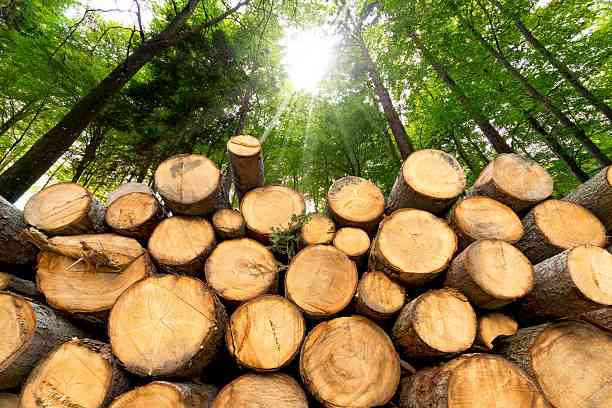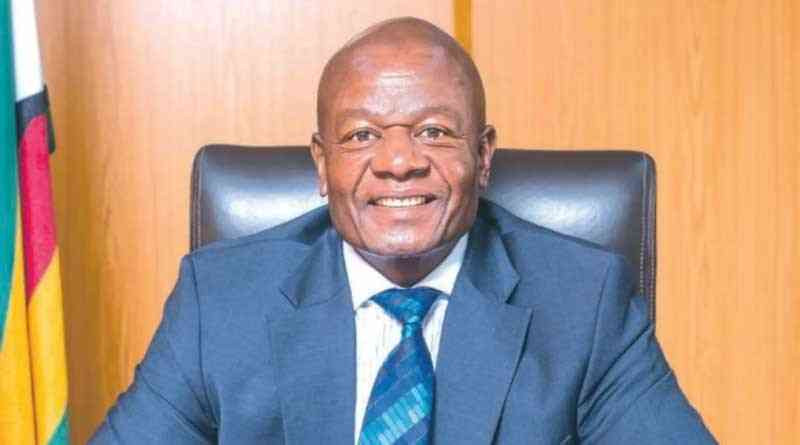
DEEP in the lush Zimbabwean Eastern Highlands, the sound of chainsaws cutting through ancient and exotic trees create a troubling symphony along the Zimbabwe-Mozambique border.
What was once a verdant expanse of forest is now dotted with gaping clearings, the result of unchecked and illegal logging that costs the Zimbabwean government more than US$50 million in lost revenue each year.
“It is a heart-breaking situation,” laments a senior official from the Forestry Commission of Zimbabwe, speaking anonymously.
“These forests are a national treasure, but they are being stripped away by greedy individuals who disregard the long-term consequences.”
The statistics are staggering.
According to the Forestry Commission, Zimbabwe is home to over 40 million hectares of forest, with two-thirds belonging to the public sector.
Yet an estimated 500 000 hectares — an area the size of the country’s capital, Harare — are being exploited illegally through unauthorised logging.
“The impact is devastating,” the Forestry Commission official says.
- Chamisa under fire over US$120K donation
- Mavhunga puts DeMbare into Chibuku quarterfinals
- Pension funds bet on Cabora Bassa oilfields
- Councils defy govt fire tender directive
Keep Reading
“Not only are we losing invaluable natural resources, but the loss of revenue cripples our ability to manage and protect these forests. It is a vicious cycle that we’re determined to break.”
At the heart of the problem lies a disconnect between the government and local communities.
Historically, forestry management has been a top-down affair, with little input from those who rely on these resources the most.
“Local communities feel disconnected from the process,” explains Kudzai Mutasa, a forestry expert at the Environmental Management Agency (Ema).
“They do not have a stake in the protection and sustainable use of the forests, which makes them complicit in illegal activities.”
Mutasa believes empowering these communities is crucial to turning the tide.
“We need to shift towards a more equitable, community-based approach to social forestry. When people have a direct say in how their resources are managed, they are much more likely to be stewards of the land.”
This sentiment is echoed by Nomalanga Moyo, a development specialist who has worked extensively with rural Zimbabwean communities.
“These forests aren’t just sources of timber and revenue. They’re the lifeblood of these communities, providing food, fuel and shelter,” she says.
“By involving them in the decision-making process, we can unlock the true potential of these resources to drive sustainable development.”
Fortunately, progress is being made
The Forestry Commission, in collaboration with the Ema and local non-governmental organisations, has been piloting community-based forestry management programmes in selected regions.
The results have been promising, with the deforestation rate dropping and communities taking a more active role in protecting their natural assets.
“It is about shifting the narrative,” states the Forestry Commission.
“We are moving away from the top-down, extractive model towards a more inclusive, sustainable approach.
“The communities are the real experts here and we need to empower them to be the guardians of these forests.”
However, challenges remain.
Experts point out that illegal logging is a lucrative enterprise, with well-organised criminal networks exploiting gaps in Zimbabwe’s enforcement capabilities.
Securing the funding and resources necessary to scale up community-based programmes is also a significant hurdle.
“It is a battle on multiple fronts,” admits Mutasa.
“We need stronger policies, better monitoring and enforcement, and, crucially, a commitment to empowering local stakeholders.
“It is a long-term game, but the future of Zimbabwe's forests depends on it.”
As the sun sets over the endangered canopy, there is a glimmer of hope.
With the right strategies and the collective will of government, communities and environmental advocates, Zimbabwe may preserve its forests and unlock their full potential as engines of sustainable development and national pride.
“These forests are part of our identity as Zimbabweans,” says Chipo Mabika, a local advocate.
“We cannot afford to lose them.
“It’s time to put the chainsaws down and start building a better future for our country and our children.”
Elliot Mupfurutsa, a local forestry ranger, surveys the damage with a heavy heart.
Just a few kilometres from his family’s homestead, once-verdant forests have been reduced to barren clearings, clear signs of illegal logging operations.
“It’s devastating to see,” Mupfurutsa says.
“These trees have been here for generations, providing food, shelter and livelihoods for our communities.
“And now, they’re just gone — stripped away for profit.”
Mupfurutsa’s experience reflects the crisis unfolding across Zimbabwe.
While government statistics highlight the staggering scale of the problem, the human toll is equally severe.
“The communities that depend on these resources are being torn apart,” he explains.
“When the forests disappear, so do the animals, the medicinal plants, and the building materials — everything that sustains us.
“It is not just an environmental catastrophe; it is a social one as well.”
Compounding the issue is a complex web of criminal networks entrenched in the illegal logging trade.
Well-organised syndicates, with connections reaching to the highest echelons of power, have proven adept at circumventing the law and exploiting gaps in enforcement.
“It is a battle on multiple fronts,” Mabika says.
“We are up against sophisticated criminal enterprises that have infiltrated every level of the supply chain.
“It is not just about catching the loggers in the act; we need to follow the money and dismantle these operations.”
To combat illegal logging, the government is working to strengthen its regulatory framework and empower local communities as active stewards of the forests.
The introduction of community-based forestry management programmes has yielded promising results, with deforestation rates declining and a renewed sense of ownership among the people.
“When communities have a direct stake in managing and protecting these resources, they become our greatest allies,” Mutasa says.
“They know the land better than anyone, and they have a vested interest in ensuring its long-term sustainability.”
Scaling up these initiatives remains a significant challenge, requiring not just political will but also a fundamental shift in how forestry is approached in Zimbabwe.
“It is about moving away from the extractive, top-down model and towards a more equitable, community-driven approach,” Moyo explains.
“We need to empower local stakeholders, give them a voice in decision-making, and unlock the true potential of these forests for sustainable development.”
For Mupfurutsa and his fellow forestry rangers, the stakes couldn’t be higher.
As they patrol daily, battling the relentless onslaught of illegal loggers, they draw inspiration from the communities they serve and the promise of restoring Zimbabwe’s forests.
“We are fighting for more than just trees,” he declares with determination.
“We are fighting for our way of life, our heritage and the well-being of generations to come.
“With the right support and approach, I know we can win this battle. But we have to act now, before it is too late.”
As the sun sets over the dwindling canopy, the urgency of Mupfurutsa’s words hangs in the air, a call to arms for all who value Zimbabwe’s irreplaceable natural resources.
The path forward may be long and arduous, but the future of the nation’s forests and the communities that depend on them now rests in the balance.










